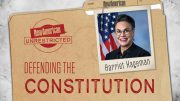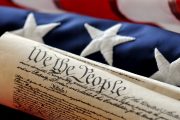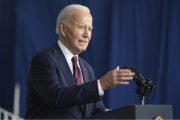
The report, authored by Michael Grabell, shows that despite research suggesting that the scanners could cause “anywhere from six to 100 U.S. airline passengers each year [to] get cancer,” expert testimony stating that the machines could be dangerous, and European policies banning the use of the scanners, the Transportation Security Administration has proceeded to deploy about 250 X-ray, or “backscatter,” scanners in airports nationwide. What’s worse, the TSA has other, safer types of scanners, known as millimeter-wave scanners, that the agency says are as effective as the backscatter scanners; but it has chosen to continue deploying the backscatter scanners even though they could adversely affect the health of the flying public.
The backscatter scanners first came to the government’s attention in 1998, at which time the Food and Drug Administration convened a panel of radiation safety experts to evaluate them. “One after another,” writes Grabell, “the experts … raised questions about the machine because it violated a longstanding principle in radiation safety — that humans shouldn’t be X-rayed unless there is a medical benefit.” One panelist specifically stated that he was “concerned … with expanding this type of product for the traveling public” — it was already being used in prisons — because doing so “would take this thing to an entirely different level of public health risk.”
“The machine’s inventor, Steven W. Smith, assured the panelists that it was highly unlikely that the device would see widespread use in the near future,” Grabell adds. “At the time, only 20 machines were in operation in the entire country.”
Then came 9/11. Suddenly airport security was all the rage; individuals’ liberties, convenience, and health were not. The TSA wanted to use the backscatter scanners, and it found a willing accomplice in the FDA.
The FDA has no authority to “subject [the scanners] to the rigorous evaluation it applies to medical devices,” Grabell notes, because “the scanners do not have a medical purpose.” Nevertheless, he says, the agency could have “set mandatory safety regulations” for the scanners. “Instead,” he writes, “the FDA decided to go with a voluntary standard set by a trade group largely comprising manufacturers and government agencies that wanted to use the machines.”
“As for the TSA,” Grabell continues,
it skipped a public comment period required before deploying the scanners. Then, in defending them, it relied on a small body of unpublished research to insist the machines were safe, and ignored contrary opinions from U.S. and European authorities that recommended precautions, especially for pregnant women. Finally, the manufacturer, Rapiscan Systems, unleashed an intense and sophisticated lobbying campaign, ultimately winning large contracts.
Rapiscan’s lobbying, combined with the 2009 federal “stimulus” law, led to the deployment of the scanners in airports, every one of which was made by Rapiscan, though there are three other companies that make such scanners. Clearly the lobbying had much to do with the TSA’s decision to deploy the scanners because, as Grabell points out, “while the TSA maintains that the body scanners are essential to preventing attacks on airplanes, it only began rolling them out nine years after 9/11.”
Even ongoing inspections of the backscatter machines aren’t exactly on the up-and-up, according to Grabell:
Inspections of X-ray equipment in hospitals and industry are the responsibility of state regulators — and before 9/11, many states also had the authority to randomly inspect machines in airports. But that ended when the TSA took over security checkpoints from the airlines.
Instead, annual inspections are done by Rapiscan, the scanners’ manufacturer.…
Last year, in reaction to public anger from members of Congress, passengers and advocates, the TSA contracted with the Army Public Health Command to do independent radiation surveys. But email messages obtained in a lawsuit brought by the Electronic Privacy Information Center, a civil liberties group, raise questions about the independence of the Army surveys.
One email sent by TSA health and safety director Jill Segraves shows that local TSA officials were given advance notice and allowed to “pick and choose” which systems the Army could check.
That email also suggests that Segraves considered the Army inspectors a valuable public-relations asset: “They are our radiation myth busters,” she wrote to a local security director.
Grabell reports that the TSA, relying on non-peer-reviewed studies showing that the radiation delivered by one pass through a backscatter machine “is roughly one-thousandth of a chest X-ray and equivalent to the cosmic radiation received in a few minutes of flying at typical cruising altitude,” claims that the scanners are “safe.”
In addition, the agency maintains that the tradeoff for greater security is worth the risk — an easy thing to say when others are assuming the risk. TSA bigwigs, like other top officials, probably don’t have to undergo the typical scan-and-grope routine at airports. As for ordinary TSA employees, some of whom have heard from technicians that the scanners are emitting excess radiation, “the TSA has not allowed them to wear badges that could measure it,” Grabell states.
None of this is to say that government standards and inspections are a guarantee of safety or even that scanner manufacturers are deliberately making unsafe products. It does, however, suggest that while the government likes to portray itself as the one thing standing between Americans and certain harm from unscrupulous companies, that same government will not let a little thing like safety prevent it from imposing its will on the people.
Photo by AP Images



